
views
Reading the Poem

Look at the form of the poem. Before you begin reading, you should first take a moment to examine how it looks. You can learn a lot about the poem's organization before even beginning to read. For example, you might see that the poem is broken into stanzas, groups of lines, and that there is a space dividing other lines and stanzas. The poem might have long, short, or even irregular lines that will help you understand its rhythm. You can tell whether the poem takes the form of an established form, such as a sonnet, or whether it's unique.

Read the poem silently to yourself. The first step in reading a poem is to sit down and read the entire poem from beginning to end. You may find you need to read it several times and that's okay.

Read the poem aloud. To fully understand a poem, it helps to read it in different ways. Reading aloud will help you understand the sound of a poem, which is important because poetry, by nature, is related to music. You can discover the rhythm of the poem or other special effects of the words, such as rhyming, alliteration, onomatopoeia, or assonance.
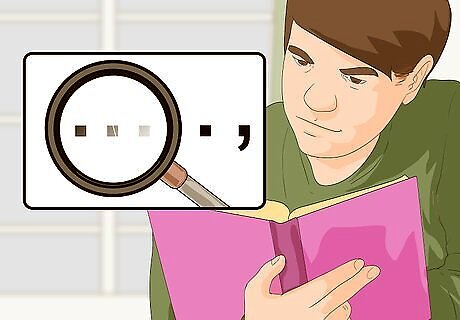
Pay attention to punctuation when you're reading. When reading the poem be aware of punctuation or lack thereof. Punctuation, such as a period, can tell you when to pause. Other times the poet will break lines off with no punctuation and so you should read on. Sometimes poets want you to briefly pause at the end of a line without punctuation. If the poem has only a few words on each line, they've done this on purpose. You'll notice this by looking at the poem before reading it.

Look up words you don't understand. See a big, fancy word you don't get? Underline it or jot it down to look up so you'll be set to begin understanding what the poem is all about. Throw caution to the wind when looking up words. Even if you think you understand a word, it may have had a different meaning if you're reading a poem that's centuries old. Make sure to note any words that have multiple meanings for this reason.
Understanding the Poem
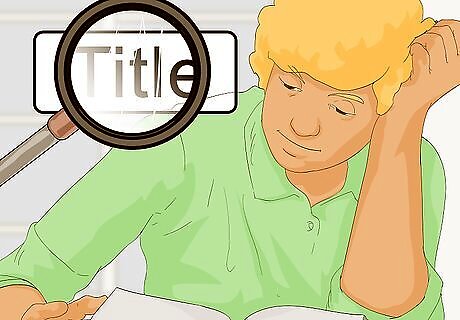
Look at the title. To understand a poem's meaning and theme, you should begin with the title. Poets carefully choose their titles to set up their poem. Does the title provoke a certain feeling? Does it set up a certain expectation for the subject? Make a note in the margin about the initial reaction you have to the title. What are your expectations for the poem based on the title?
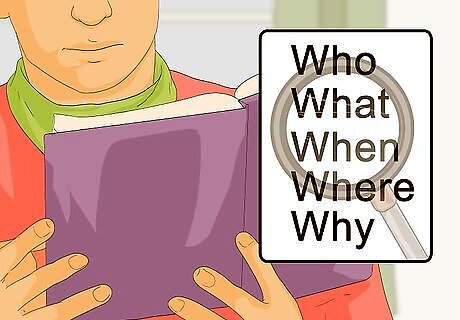
Decide the who, what, when, where, and why of the poem. Thinking about this set of criteria will help you begin to discover the subject of the poem and what the poet is trying to communicate to you, the reader. Who's the speaker of the poem? You should remember that the poet is not always the narrative voice in the poem. Are there multiple characters in the poem? Who's the speaker's audience? What's the basic plot of the poem? Are there conflicts present and are they resolved? Is there a turning point or transition in the poem? When does the poem take place? Present time? In the past? Over a long period of time or in a single night? Where does the poem take place? Is there a physical location? In it an imaginary environment? Why is the speaker of the poem speaking to you? What has compelled the speaker to share this poem?

Think about the poem's rhythm. Now that you've thought about the poem's subject and intent, look more closely at how the poem's meter (regulated or repetitive beats of words in a line) or rhythm contribute to its meaning. Read the poem aloud to get a sense of its rhythm or meter. Words that are stressed through rhyme or repetition may be key to understanding the meaning of the poem. Punctuation or words in the poem that force you to slow down may be the poet's way of calling your attention to their importance.

Determine what imagery the poem conjures up. After reading the poem, think about what images have popped up in your mind. Understanding the imagery of a poem will help you get at its meaning. How did the poet put these images in your mind? Imagery isn't limited to the visual. Imagery also relates to other senses, such as smell or taste, through words. The poet may have evoked imagery through symbolism, a physical object that represents an idea, value, or emotion. If a poet has used a particular object multiple times, this is a good clue that it may be a symbol. Ask yourself if that object could represent an idea instead. The poet might use allusions, a reference to something outside of the poem, to conjure up an image. Allusions are frequently references to other texts, such as the Bible.
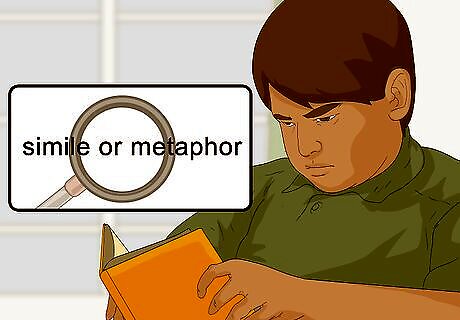
Look for similes and metaphors. If the poet compares one thing to another using a simile or metaphor, the poet is evoking an image through words.
Providing a Reaction

State the poem's meaning. Most poets write their poems with an idea they want the reader to take away from it, but readers may take away something different depending on their own biases and experiences. Now that you've read and understood the poem, explicitly state the meaning you took away from it. Make sure you provide evidence from the poem for your understanding. Poetry can be very subjective and if you've come to a conclusion that the poet had not intended, it will be useful for the poet or reader of your essay to understand what signals in the poem brought you to this conclusion. Make sure you have some textual evidence from the poem to back up what you think it is saying. The poem's meaning could relate to the poet's own life, could reflect societal norms, or could challenge an accepted idea. Evidence from the poem can include things like meter, rhythm, organization, imagery, or punctuation. To make it easier to follow your thoughts, reference evidence in the poem by line number.

Consider the author's intent and their audience. Different people might react to poems in different ways. Think about how this poem might resonate with someone who has a different viewpoint than you. Is there room for multiple interpretations? This will help both you and the poet understand potential different meanings in the poem.
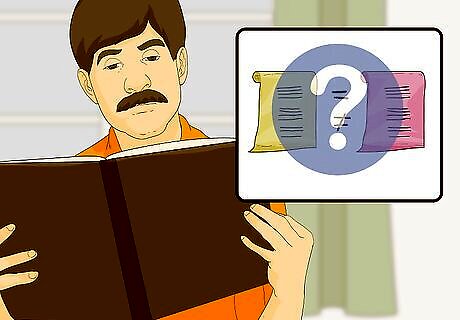
Determine how the poem's themes relate to other poems. Are there other poems that have a similar theme? How is this one different? How is it the same? This will help you and the poet understand where their work fits in with other poems. Be cautious when speaking about originality. Just because it may bear some similarities to other authors' works does not mean it's unoriginal.

Voice any confusion or concern. As a reader, you can provide a valuable response to the poem. If there are parts that are unclear or punctuation that you do not understand, voice this. This can be the start of a very constructive conversation. If you are dealing directly with the poet, use caution with your criticism since poetry is often an expression of the poet's innermost feelings. Even if the poem is not dealing directly with the poet's own feelings, creating any work of art can lead to heightened sensitivity.
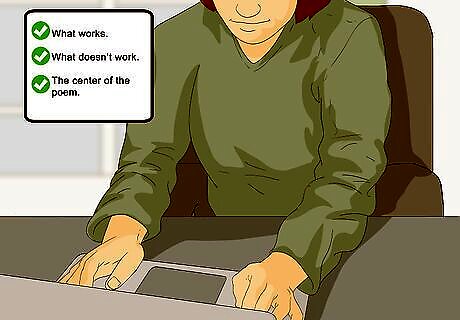
Include a list of things that contributed to the poem's meaning. It is important to balance comments on what might not work in the poem with elements that do work. This will help either the reader of your interpretation or the poet understand what elements did contribute to understanding the meaning of the poem and what did not. An overabundance of praise is not useful for convincing the reader of your essay that you understood the poem. Excessive praise is also not useful criticism for a poet. Instead, be selective and explain why a part was a particularly strong.


















Comments
0 comment